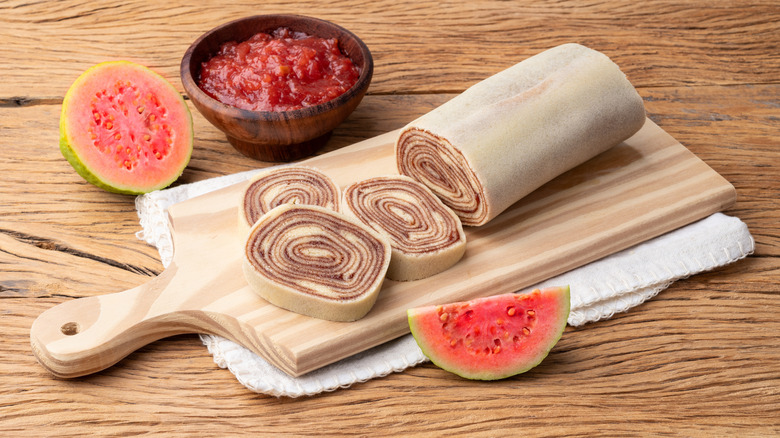How To Eat A Guava The Right Way
Guava, a tropical fruit native to Mexico, the Caribbean, Central America, and parts of South America, is beloved for its bold aroma, vibrant flavor, and impressive versatility in sweet and savory dishes. This aromatic fruit, which is also a staple in Cuban cuisine, is characterized by a thick, grainy skin that is perfectly fine to eat and can range from bright green to pale yellow, depending on the variety. Inside, the juicy flesh varies in color from creamy white to vivid pink or deep coral. Guavas also come in many shapes and sizes, ranging from large, rounded shapes to smaller, bite-sized fruits that make for a convenient snack. While most familiar guava varieties turn sweet when ripe, some stay sour throughout and are great for tangy sauces, savory marinades, and more. Given the versatile nature of guavas, is there a right way to eat this fruit for optimal enjoyment?
If you enjoy biting into fresh fruit, guava is perfect for you as nearly all parts of the fruit are edible, and biting into the skin enhances the experience of savoring the ripe fruit at its prime. Wash and dry the fruit before trimming the tough, top portion where the stem attachment is. Your teeth might need a bit of training to get used to not biting into the tiny seeds; instead, carefully swallow them whole. This is because when chewed, the minuscule seed particles can get stuck between your teeth and be a hassle to clear out. Beyond offering a satisfying bite of fresh fruit, guava can be simmered into jams and jellies, folded into pastries, or blended into refreshing beverages.
Guava-based creations from around the world
While a staple in Caribbean and Latin American cuisine, guava's lush, tropical flavor transcends international borders, making it a beloved ingredient across global cuisines. The fruit shines in nearly everything, from flavorful condiments and decadent desserts to vibrant drinks. Given the natural balance of sweetness and acidity, which pairs effortlessly with a wide variety of ingredients and cooking styles, there's a reason why guava deserves to be a culinary staple in home kitchens and gourmet restaurants alike.
In Latin American cuisine, guava's rich flavor stars in a smooth paste in sweet pastries like pastelitos. In Brazil, goiabada — a dense, sliceable guava preserve — is commonly spread on toast, rolled into a Brazilian rocambole, or served with a Brazilian cornmeal cake called bolo de fubá. Across South and Southeast Asia, guava also takes on a savory role. Guavas were introduced to India by the Portuguese in the 17th century and have since been grown in the subcontinent, becoming a staple fruit, condiment ingredient, and street food. In India, amrood ki chutney (Hindi for guava chutney) is a spicy, zesty chutney that features tart guavas complemented by green chilies and citrus. On the streets of India and Thailand, vendors sell guava slices dusted with tantalizing spices for a satisfying snack.
Seeking a refreshing thirst quencher? Consider incorporating guava into your mixology sessions and add it to your list of creative margarita flavors, blend the fruit into a juice or smoothie, or shake up a tasty mocktail. Whether you want to infuse your simple, homemade jam with a tropical touch, add depths of flavor to savory curries, or bring vibrant flavor to your beverages, guavas can be your gateway to creative cooking in your home.

